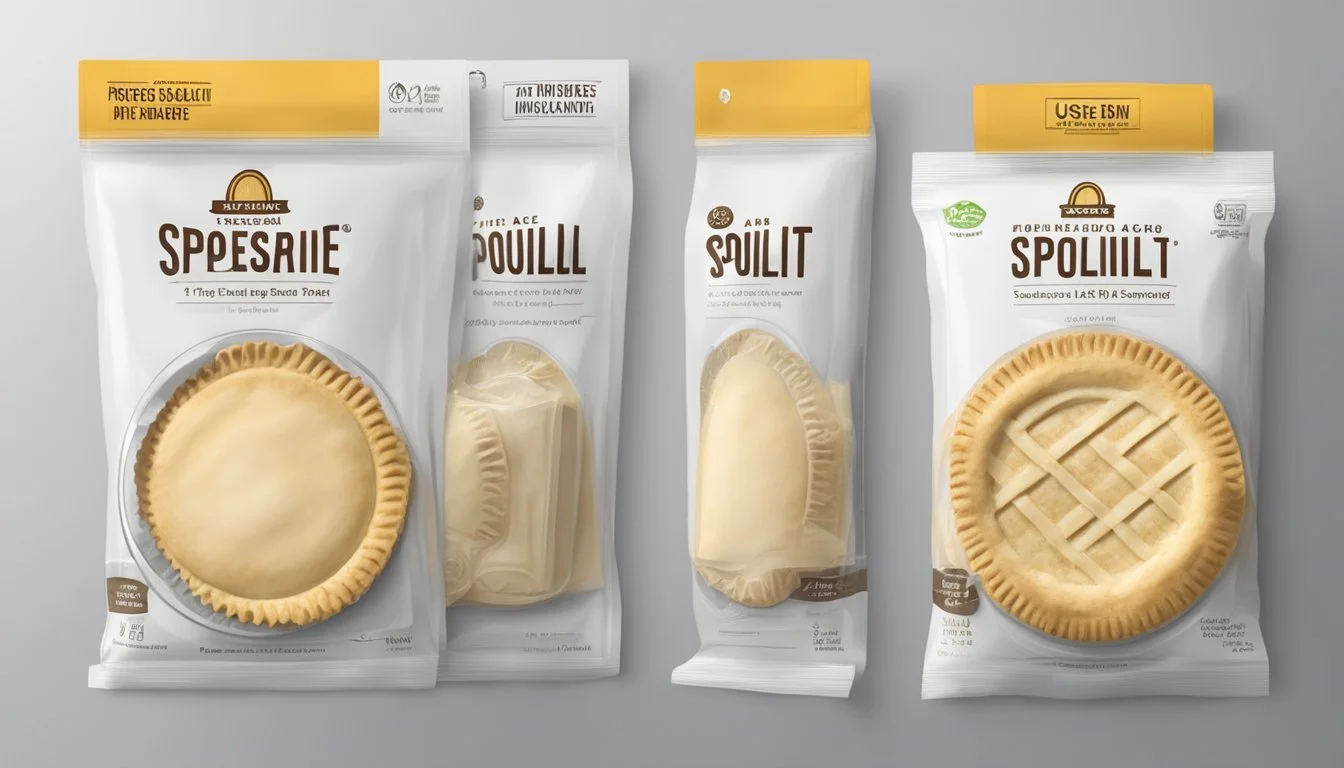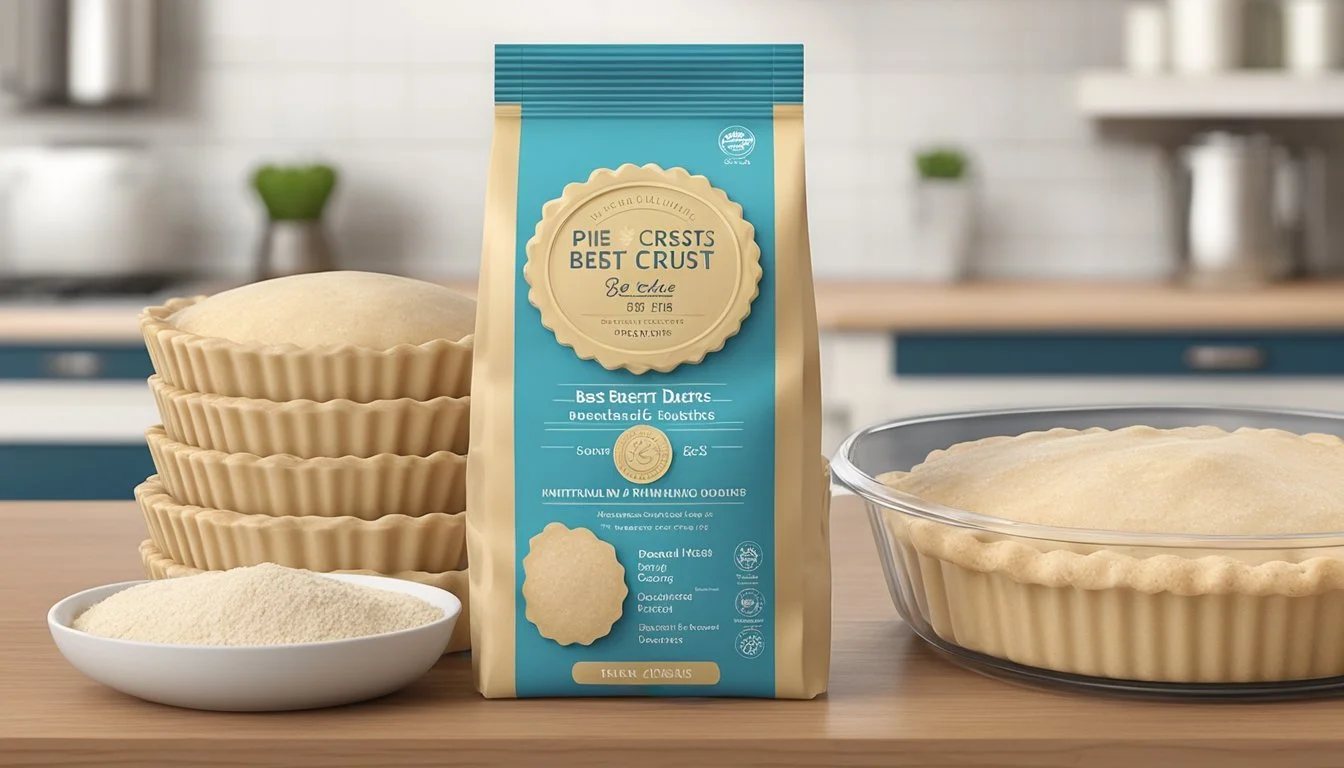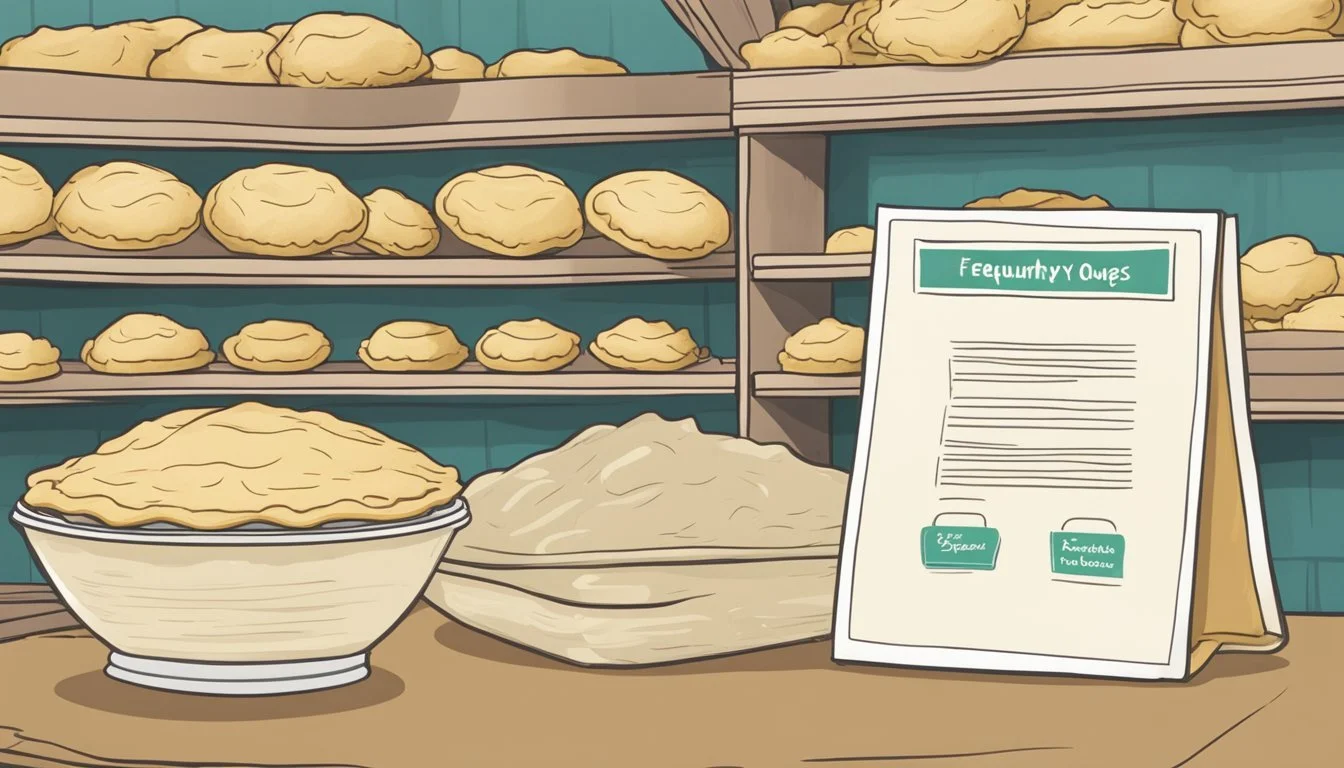How Long Does Pre-Made Pie Crust Dough Last?
Shelf Life and Storage Tips
Pie crust is a foundational element for many delicious desserts, and its shelf life is an important consideration for bakers who value both flavor and convenience. Pre-made pie crusts, available in grocery stores, offer a quick alternative to homemade dough, saving time and effort.
The longevity of packaged pre-made pie crusts depends on how they are stored. When kept in a cool, dry place at room temperature, these crusts can remain usable for about 12 to 18 months. If refrigeration is employed, the shelf life can extend up to two months, which is advantageous for those who plan their baking with some lead time.
For those who prefer to prepare their crusts from scratch and wonder about storage, a homemade pie crust can last approximately two days in the refrigerator. To further extend its life, freezing is an excellent option, allowing the dough to be kept for up to two months without compromising quality, ensuring that bakers can have a pie crust ready whenever they need it.
Types of Pie Crust Dough
Pie crust dough comes in various forms to accommodate different storage needs, preparation methods, and dietary restrictions. Each type offers distinct advantages, whether it's for a quick dessert preparation or creating a pastry masterpiece from scratch.
Refrigerated Pie Crust
Refrigerated pie crusts, such as Pillsbury pie crust, offer convenience and are typically sold in the dairy section of grocery stores. They are ready to unroll and fit into a pie plate without the need for additional preparation. These crusts usually have a shelf life of several weeks and should be used by the date indicated on the package.
Shelf life: Up to the use-by date on the package
Common brands: Pillsbury, store brand alternatives
Dietary options: Limited availability in gluten-free variations
Frozen Pie Crust
Frozen pie crusts are ideal for longer storage, lasting for several months when kept at a consistent temperature. They must be thawed before use, which can take a few hours, so planning ahead is necessary. These crusts can vary in quality, with some being comparable to homemade crusts.
Shelf life: Several months when properly stored
Preparation: Requires thawing before use
Variants: Available as gluten-free pie crust in some brands
Homemade Pie Crust
Homemade crusts can be made using a pie crust mix or from scratch with basic ingredients like flour and fat. They allow for complete control over the ingredients and can be tailored to specific dietary needs. However, they require more time and effort.
Ingredients: Typically, 3 parts flour to 1 part fat
Flexibility: Can adjust recipe for texture and flavor, e.g., butter for flavor or shortening for flakiness
Each type of pie crust has its place in the kitchen, and the best choice depends on the needs and preferences of the baker. Whether store-bought for convenience or homemade for customization, there's a pie crust option suitable for every recipe and occasion.
Storage and Shelf Life
Storing pre-made pie crust dough appropriately can significantly affect its shelf life and freshness. Whether in the refrigerator, freezer, or pantry, understanding the proper storage methods helps maintain quality and prevents food waste.
Refrigerator Storage
Pre-made pie crust dough typically lasts up to two weeks in the refrigerator when sealed in an airtight container or wrapped tightly in plastic wrap. The cool environment of the fridge is ideal for short-term storage, keeping the fat within the dough firm and preventing a soggy crust. For homemade crusts, the refrigerator preserves their texture for several days.
Freezer Storage
For long-term storage, freezing pie crust dough is effective for up to three months. The dough should be wrapped in plastic wrap and then in foil to safeguard against freezer burn. Both store-bought and homemade dough can be frozen, maintaining freshness for future baking endeavors such as pumpkin pie or apple pie.
Pantry Storage
At room temperature, pre-made pie crusts should be used by the date on the package, typically a short period. Room temperature is suitable for immediate use; it does not provide any long-term storage solution and risk of the crust becoming stale increases. It is not advisable to store pie dough in the pantry once opened or homemade.
Handling and Preparation
When managing pre-made pie crust dough, attention to detail in the thawing, rolling, and baking process ensures a perfect base for your pie filling. Following proper procedures is crucial for the longevity and quality of the dough.
Thawing Process
Before working with a frozen pre-made crust, thawing it correctly is essential. Transfer the crust from the freezer to the refrigerator and let it thaw overnight. Alternatively, leave it on the countertop for up to an hour for a quicker approach. Avoiding rapid temperature changes prevents the dough from becoming too soft and difficult to handle.
Rolling and Shaping
To roll the crust to the desired thickness, a rolling pin should be used on a lightly floured surface to prevent sticking. Roll outwards from the center until the dough reaches an even thickness and is larger than the pie plate. Carefully lift and drape the crust over the rolling pin to transfer it into the plate, shaping it gently against the bottom and sides.
Gently press the dough into the pie plate's edges.
Trim excess dough from the edges and crimp as desired for a decorative touch.
Pre-Baking Considerations
Pre-baking or "blind baking" a crust is necessary for certain types of pie fillings, like custard-based pies or fresh fruit pies. This involves baking the crust partially or fully before adding the filling. Here's a simple guideline:
Chill the shaped crust in the pie plate for 15 minutes.
Prick the bottom with a fork to prevent bubbling.
Line the crust with parchment paper and fill with pie weights or dry beans.
Bake at 400°F for about 8-10 minutes for a partially baked crust, or according to the recipe directions for a fully baked crust.
This preparation ensures that your pie crust will hold its shape and crisp texture even after the filling is added.
Baking Tips for a Perfect Pie
Achieving the perfect pie requires careful attention to the crust’s texture, color, and structure. Well-executed baking techniques can prevent common issues such as sogginess while ensuring a golden, flaky result.
Avoiding a Soggy Crust
To prevent a soggy crust, one must first blind bake the pie crust. This process involves baking the crust before adding the filling. A well-chilled crust made with a high-fat ratio dough tends to withstand becoming soggy. The fat content, which could be butter or shortening, creates pockets that become flaky layers when baked. For additional protection, one can brush the crust with egg white or melted butter before the blind bake, which creates a seal that helps to prevent sogginess.
When blind baking, it's crucial to use pie weights. For this purpose, one can use:
Commercial pie weights
Dried beans
Rice
This step weighs down the crust, preventing it from puffing up or shrinking as it bakes.
Achieving Golden Brown Perfection
A golden brown crust is typically a sign of a perfect pie crust. To achieve such a finish, the baking time must be adjusted according to the pie recipe and oven characteristics.
The oven should be preheated properly, generally ranging from 375°F to 425°F depending on the recipe. One can also apply a light glaze made of an egg wash (1 beaten egg mixed with a tablespoon of water) over the crust for a deeper golden color and shine. Baking until the crust is golden brown ensures the gluten, which provides structure, is fully set.
Utilizing Pie Weights
Using pie weights is essential for blind baking a crust that holds its shape. Before placing the weights, line the chilled dough with aluminum foil or parchment paper to ensure an easy removal after the crust has partially baked. Traditional pie weights work well, but common pantry items like dried beans or rice can be equally effective. Distribute them evenly to apply consistent pressure on the bottom and sides of the crust, which is crucial in achieving a flaky crust without slumping. After initial baking, the weights are carefully removed, and the crust finishing involves:
Returning the crust to the oven to brown lightly
Monitoring for even baking time to prevent over-browning
Adequate baking and proper use of weights help achieve the ideal texture and structure for a multitude of pie recipes.
Safety and Spoilage Indicators
It's important for consumers to identify when pre-made pie crust dough has gone bad to ensure their safety. Being aware of the visual and olfactory indicators of spoilage can prevent foodborne illness.
Signs of Expiration
Visual Inspection: A fresh pie crust should have a consistent color indicative of the ingredients used. One should look for any discoloration or gray spots which often suggests oxidation or freezer burn for pre-made dough.
Expiration Date: An unopened pie crust mix can last up to one year in the pantry; however, after this period, checking for spoilage is important. Once opened, the mix should be used within six months.
Mold and Odor Detection
Mold Growth: On both raw and cooked pie crusts, the presence of fuzzy spots or any kind of mold implies that the crust is no longer safe to consume.
Smell: An off or rancid smell is a clear indicator that the pie crust dough has gone bad. Fresh pie crust should not have any strong or unpleasant odors.
Nutritional Information
Pre-made pie crust dough typically contains a specific nutritional profile, which varies slightly between brands. For an average pie crust, the following table outlines key nutritional components per serving, generally considered to be one slice of pie crust, or roughly one-eighth of a 9-inch crust:
Nutrient Amount per serving Calories About 100-200 Total Fat 7-11g Saturated Fat 3-4.5g Cholesterol 0-10mg Sodium 100-200mg Total Carbohydrate 11-20g Sugars 1-2g Protein 1-3g Iron Varied Calcium Varied Potassium Varied
It’s important to note that saturated fat contributes to the flaky texture of the crust but should be consumed in moderation. Most pre-made pie crusts do not contain significant amounts of cholesterol, making them a suitable option for those monitoring their cholesterol intake.
Regarding minerals, the presence of iron, calcium, and potassium will depend on the specific ingredients used by the manufacturer. Some crusts may be fortified with additional nutrients, while others rely on the natural content of the ingredients.
When considering the nutritional content of pre-made pie crust dough, consumers should be mindful of the total fat and sodium levels, especially if they are following a diet with restricted fat or sodium intake. Despite the convenience, users should balance their diet with other nutrient-rich foods to maintain healthy eating practices.
Creative Uses for Leftover Pie Crust
Leftover pie crust offers a versatile foundation for both savory and sweet culinary creations, ensuring no dough goes to waste. Below are focused applications to transform surplus crust into delectable dishes.
Savory Applications
Quiches: (What wine goes well with quiche?) Utilize leftover pie crust to line a pie dish for a quiche. Combine eggs, cream, cheese, and your choice of savory fillings like spinach, bacon, or mushrooms for a flavorful meal.
Hand Pies: Fill squares of pie crust with a mixture of cooked meat, vegetables, and cheese before sealing them into individual hand pies. Perfect for on-the-go snacks or appetizers.
Tarts: Fashion smaller tart shells out of the crust to be filled with savory ingredients such as caramelized onions, goat cheese, and fresh herbs.
Sweet Treats
Fruit Tartlets: Press leftover pie crust into mini tart tins and fill with a custard base, topping with fresh fruits like blueberries, apples, or any seasonal produce.
Cinnamon Sugar Strips: Cut the dough into strips, sprinkle with a mix of cinnamon and sugar, and bake until crispy. Serve as a sweet snack or dessert garnish.
Mini Pies: Create bite-sized versions of classic pies, such as apple pie or chocolate cream pie, using a muffin tin for a delightful treat.
Frequently Asked Questions
When it comes to pre-made pie crusts, knowing the particulars can make all the difference between a perfect pie and a baking mishap. This section answers commonly asked questions about reheating, preventing shrinkage, and crust alternatives.
Can You Reheat Pre-Made Pie Crust?
Reheating pre-made pie crust is typically not recommended as it can lead to over-browning or a soggy texture. If the crust needs to be warmed up, it should be done at a low temperature, around 300°F (150°C), for a short period. Protect the crust by covering it with aluminum foil to prevent it from burning.
How to Prevent Crust from Shrinking?
To prevent pie crust from shrinking, a baker should:
Chill the pie dough before baking for at least 30 minutes.
Use pie weights or dried beans to weigh down the crust during the first part of baking. This helps maintain the shape.
Avoid overworking the dough; excess manipulation can activate the gluten and cause shrinkage.
Note: When rolling out pre-made dough, keep it from getting warm to reduce stress on the gluten.
Pie Crust Alternatives
For those who seek alternatives to traditional pie crusts for health or dietary reasons, a few options include:
Gluten-free pie crusts: Made with a mix of gluten-free flours, suitable for those with gluten intolerances.
Cookies or cakes: Crumbled cookies or cake bases can serve as a sweet, textured alternative for crusts.
Using plastic wrap and the upside down technique can keep alternatives fresh in the fridge just like regular pie dough, maintaining taste and texture for when it's time to bake.









